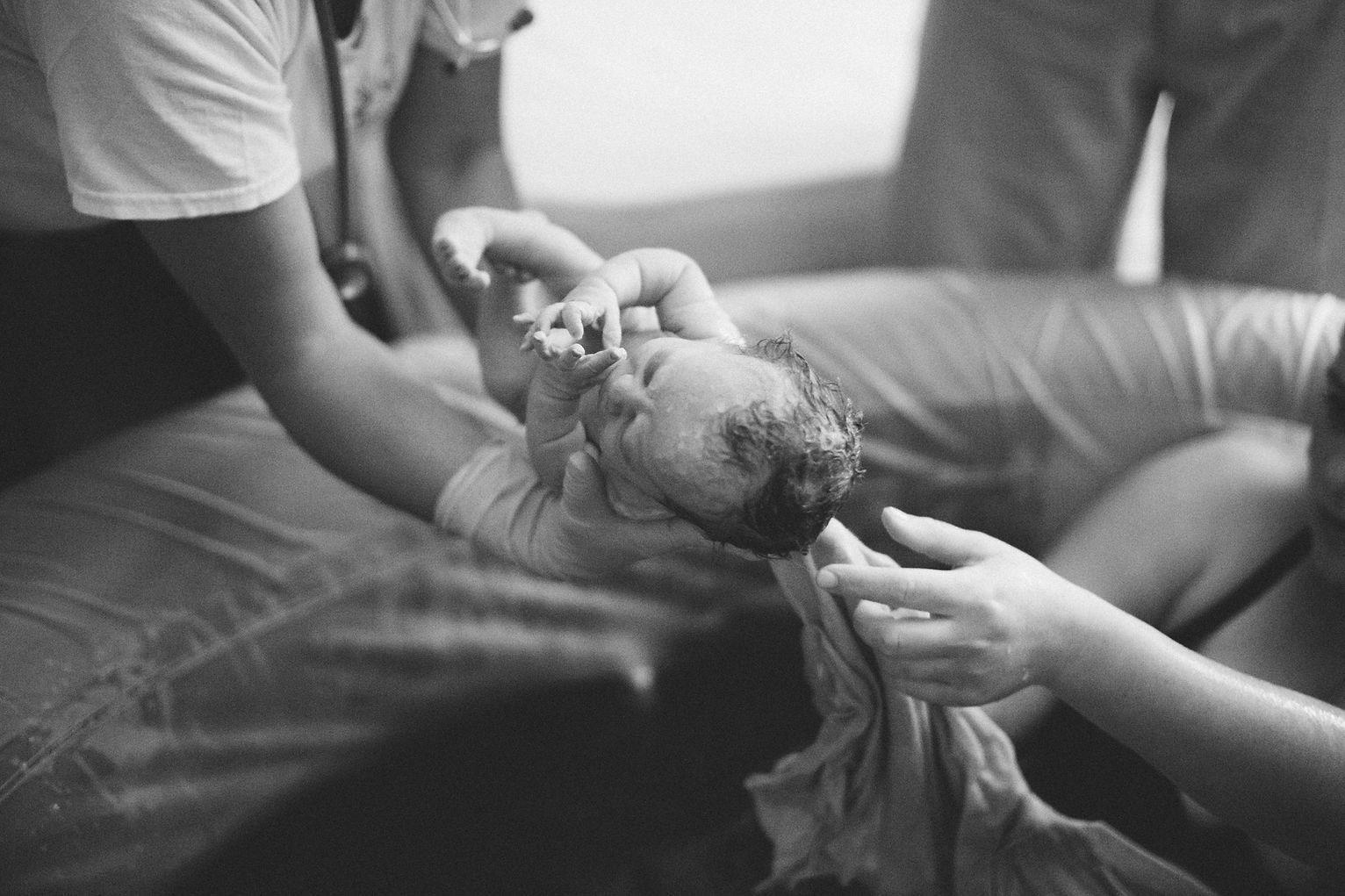Is Home Birth Safe?
This question comes up often and isn’t easy to answer. Giving birth, like everything else we do in life, involves risk. As midwives, we understand normal physiologic birth and make every effort to allow the natural process to unfold without intervention.
In other words, we don’t try to make childbirth safer. We recognize that undisturbed birth is already as safe as life gets.
Midwifery care involves careful attention to the mother’s health during pregnancy with a goal of simultaneously optimizing her baby’s health. We care for mother and baby by recognizing that good nutrition, exercise, stress management, and childbirth education are better ways to improve outcomes than more frequent and invasive medical testing.
Likewise, when it comes to labor and birth, midwives rely most often on supportive care in encouragement and comfort measures to help women and babies through the process.
The midwifery model of care stands in contrast to the medical management of birth.
It is often said that the very first intervention in birth takes place as the mother leaves her home, gets in a car, and travels to the hospital. Once admitted, she becomes a patient, and often routine interventions follow (hospital gown, blood draw, IV, continuous electronic monitoring, restrictions of movement, and denial of food).
All too often, once the cycle of medical intervention begins, it ends with cesarean birth.
In the United States, 31% of full-term babies are born via surgical birth. This is well above the World Health recommendation of a 10 - 15% cesarean section rate.
While cesarean surgery is lifesaving for some mothers and babies, at the population level, when the cesarean rate is higher than 10% it is not associated with reductions in maternal and newborn mortality rates. Instead, mothers and babies are exposed to increased risks through unnecessary intervention.
In 2014, a landmark study published in the Journal of Midwifery and Women’s Health examined the outcomes of 17,000 courses of midwife led-care in the United States. This important research was the largest analysis of planned home birth in the United States. Let’s see what this study has to say about our question, “Is Homebirth Safe?”
Study published in the Journal of Midwifery and Women’s Health
Of the 17,000 women who planned to give birth at home with midwives, 89.1% of them did. The majority of in-labor transports from home to hospital were for slow progress and or epidural analgesia. Importantly, babies in this study who were born at home were healthy. Only 1% of babies required transfer to the hospital after birth, most for non-urgent conditions. Other notable statistics from this study:
93.6% spontaneous vaginal birth
1.2% assisted vaginal birth
5.2% cesarean birth
Of the 1,054 women in the study planning a VBAC (vaginal birth after a cesarean, 87% were successful
Low Apgar scores (<7) occured in only 1.5% of newborns
1.5% postpartum maternal transfer to hospital
86% of newborns were exclusively breastfed at 6 weeks of age
In short, what this important research confirms is what midwives have long known:
Women can safely give birth at home
And women who give birth at home have greatly reduced risks of experiencing medical interventions such as pitocin-induced labor, episiotomies, and cesarean sections. Birth works best when the normal physiologic process is understood and honored.
Cheyney M, Bovbjerg M, Everson C, Gordon W, Hannibal D, & Vedam S. Outcomes of care for 16,984 planned home births in the United States: The Midwives Alliance of North America Statistics Project, 2004-2009.
Are you looking for midwifery care? We serve women located in the Terre Haute, Indiana area. Reach out today to book your free consultation.
Wabash Valley Midwives
A MODERN MIDWIFERY PRACTICE
Terre Haute, Indiana






